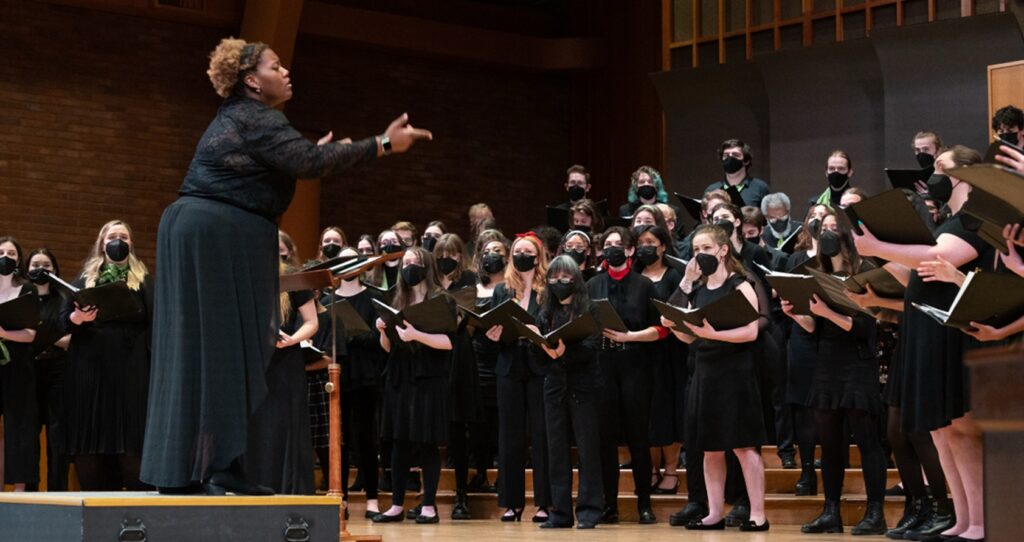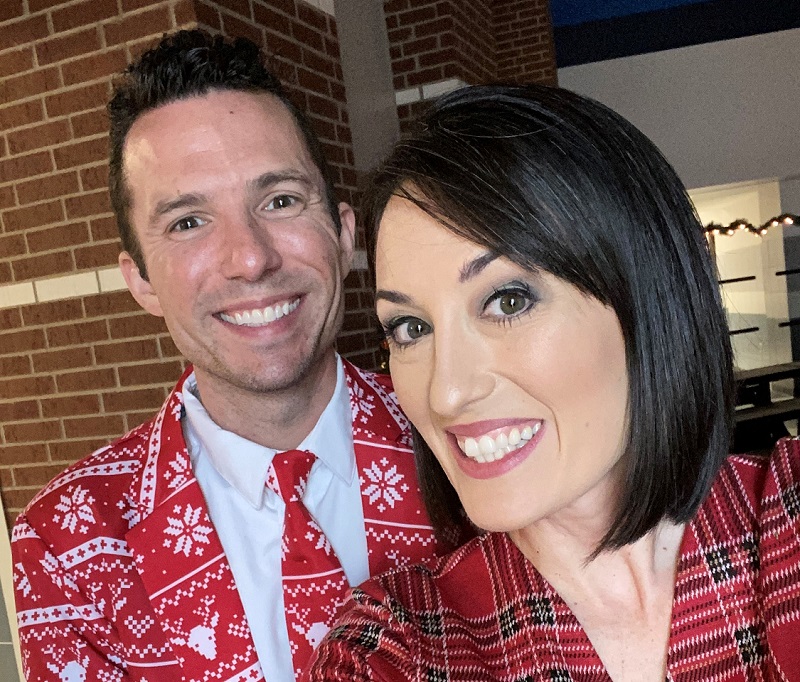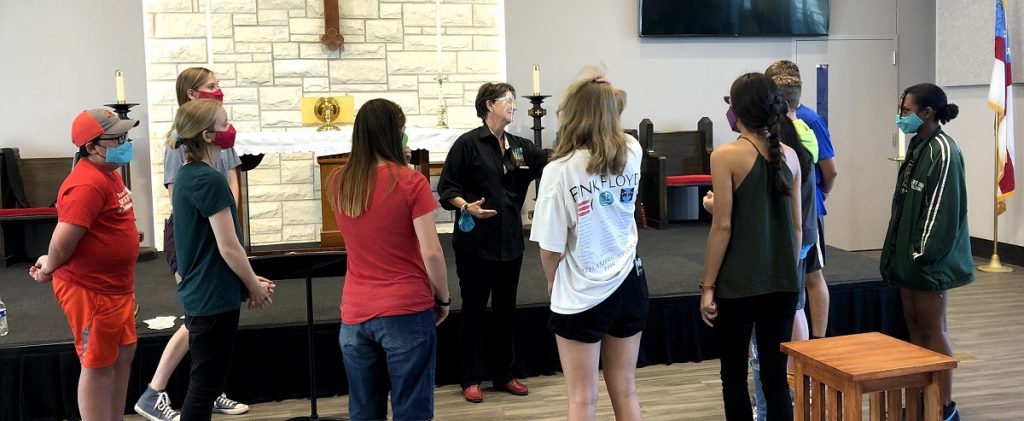Tagged Under:
Case Study: Giving Voice to Middle School Choir Students
A middle school choir teacher builds a classroom community as she promotes self-esteem and self-discovery.
The junior high years can be an awkward period. That’s why promoting self-esteem and self-discovery have become major components of Lydia Cox’s goals as the chorus and digital music teacher at Crosby Middle School within the large district of Jefferson County Public Schools in Louisville, Kentucky.
“I’ve really enjoyed my experience in middle school,” says Cox, who has been at Crosby since 2016 after three years of teaching at a high school. “It’s an awesome age. They grow a lot in those three years, and I’ve enjoyed helping to foster that growth and all the nuances that come with their emotional development.”
Participation Matters
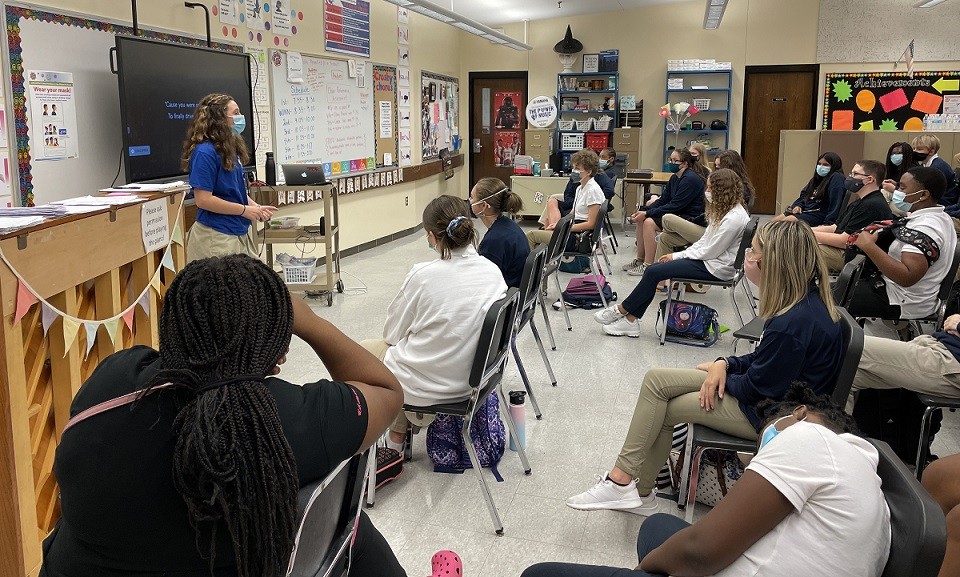 Cox has a dual role at Crosby, directing 6th, 7th and 8th grade choirs as well as teaching digital music classes that are part of the school’s overall STEAM (science, technology, engineering, the arts and mathematics) program.
Cox has a dual role at Crosby, directing 6th, 7th and 8th grade choirs as well as teaching digital music classes that are part of the school’s overall STEAM (science, technology, engineering, the arts and mathematics) program.
Crosby has an average of 350 students per grade. About 40 to 50 students per grade arein choir, while approximately 120 participate in STEAM.
In choir, Cox teaches students with a range of abilities and aspirations and takes pride in melding them together. “I have some students who enter as 6th graders and know they love singing and are very passionate about it and are going to seek every opportunity they can,” she says. “But I also have other students who are placed in the class because they need an arts class, and they’re very skeptical of singing and of choir. But I’ve seen these students really buy into the community of the program and end up being great leaders. It’s wonderful to see both sides of that scale and to have them all come together and share their voices and make music together. I think that’s a special thing about singing — students sharing a part of themselves.”
Cox has developed several strategies to nudge reluctant participants. For example, she uses a name randomizer to call on students for answers. To introduce the concept, she starts with low-risk questions like, “What’s your favorite color?” She also uses the name randomizer for “cheesy things” like giving a peer a round of applause. “That way, when it’s more content-related, there’s not as much fear surrounding being randomly called,” she adds.
 She’ll also use visual cues, perhaps requesting that students touch their noses when they can identify the first dynamic change or use solfege hand signs to identify the letter names of notes or hold up the number of fingers to correspond with the number of beats. “With things like that, I expect 100% participation,” Cox says. “I look for those nonverbal opportunities that 100% of students can participate in.”
She’ll also use visual cues, perhaps requesting that students touch their noses when they can identify the first dynamic change or use solfege hand signs to identify the letter names of notes or hold up the number of fingers to correspond with the number of beats. “With things like that, I expect 100% participation,” Cox says. “I look for those nonverbal opportunities that 100% of students can participate in.”
Another technique is to give a discussion prompt and let peers talk it out. Then she’ll ask for a student to share his or her neighbor’s response. “They’re not sharing their own opinion; they’re sharing someone else’s,” Cox says.
Overall, Cox says that she wants to hear from every student at least once every two to three days.
“I think a lot about the quiet, compliant students who shows up and does their work and maybe won’t raise their hands,” Cox says. “It matters to me that I acknowledge at some point in the class that they’re there.”
Plethora of Performances
The choir classes also have opportunities to voice their ideas by playing a role in music selection. “My opinion on what music they perform and study is just one opinion in a classroom of 40 to 50 students,” Cox says. “I let them brainstorm music that we can perform. Sometimes I will present them with three choices, and we’ll listen to the three choices and talk about them, and they get to vote. [I’m] just trying to incorporate their voice and opinion as many times as possible.”
Students perform in two casual concerts —at the beginning and at the end of the school year — during class time. They can invite favorite teachers and staff with personalized cards.
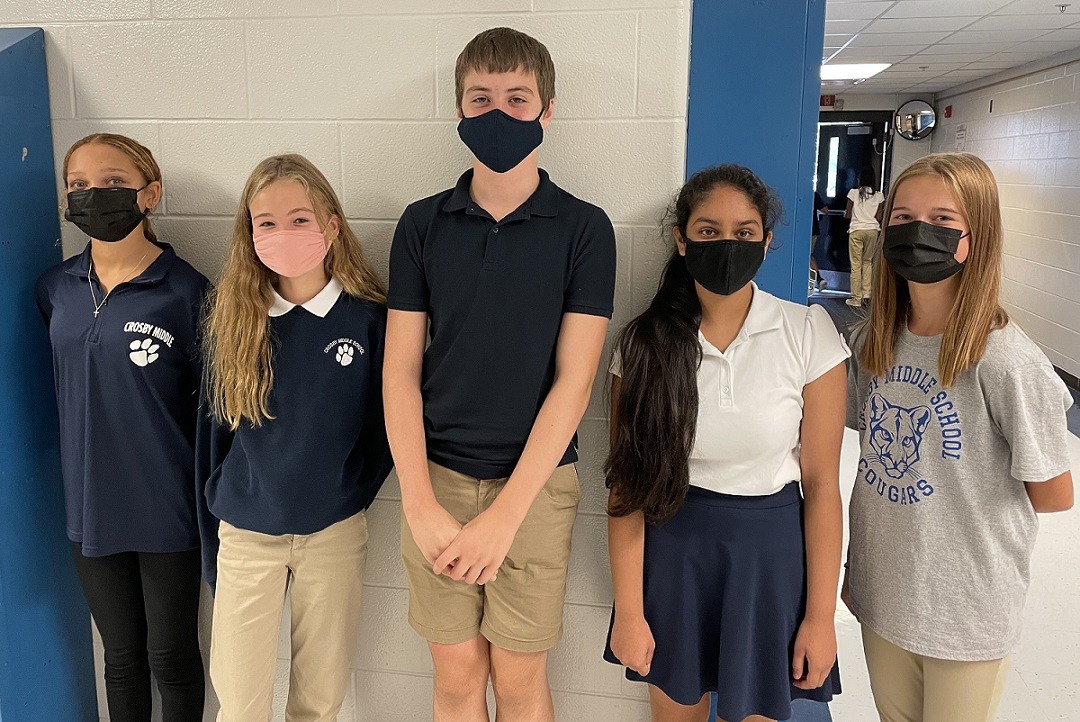 They also participate in three to six formal evening concerts for family, some in collaboration with the high school choir from nearby Eastern High School, plus assemblies for elementary schools or in the District 12 Kentucky Music Educators Association performance assessment for large ensembles. Since 2018, the 8th graders in choir, band, orchestra and piano have combined in a school Veterans Day program that has included multiple song selections, a joint patriotic medley, various speakers and honored guests.
They also participate in three to six formal evening concerts for family, some in collaboration with the high school choir from nearby Eastern High School, plus assemblies for elementary schools or in the District 12 Kentucky Music Educators Association performance assessment for large ensembles. Since 2018, the 8th graders in choir, band, orchestra and piano have combined in a school Veterans Day program that has included multiple song selections, a joint patriotic medley, various speakers and honored guests.
For students who want additional singing opportunities, Cox points them toward community programs, voice lessons or honor choirs. About 30 of her students participate in all-county choir each year with about 10 in all-state choir and some who sing with the all-national choir through the American Choral Directors Association. Cox helps students audition as well as prepare for their performances.
Cox also directs an extracurricular middle school a cappella group called Roar and collaborates with the Eastern High School director on a junior varsity group. With only 12 to 16 students in Crosby’s ensemble, students need to be self-assured in their parts. “Students who are in Roar gain a lot of confidence and independence,” she says. “To give them that opportunity to be independent singers and to see their growth has been a real treat.”
In general, Cox makes sure that students feel valued with any level of commitment. “One of my goals is to provide [extra] opportunities for my students who want them,” she says. “I also want to incorporate as many opportunities [as possible] for 100% of my students to participate in, so that they all feel a part of this choir community. … It’s such a vulnerable age, and I want them to feel a part of something and to be proud of themselves,” Cox says. “Any way I can help foster that at that age — that’s my goal.”
Classroom Community
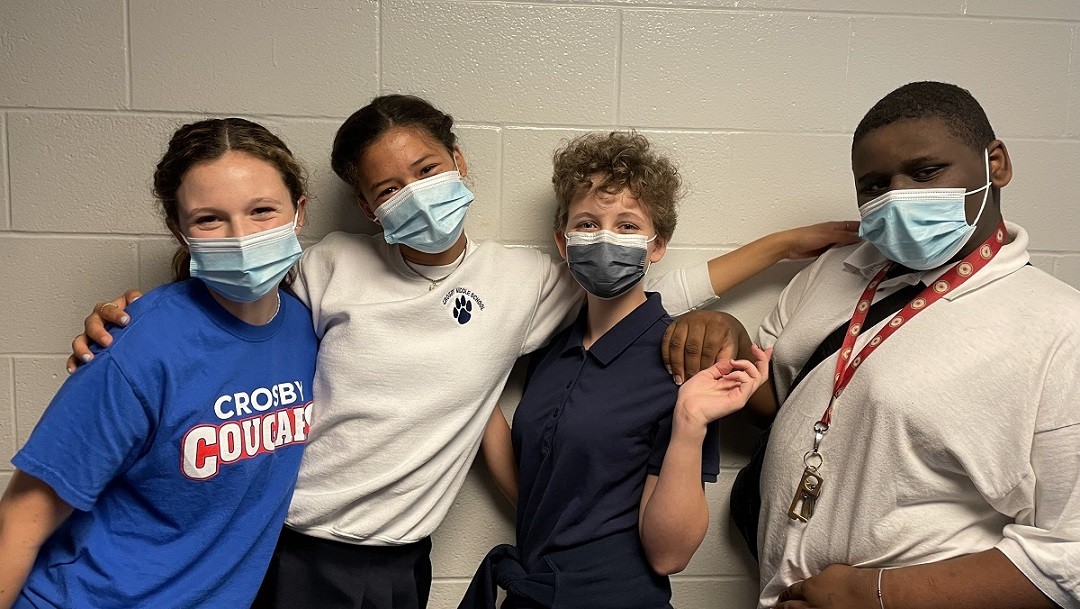 Beyond just teaching the mechanics of singing, Cox strives to create a community where everyone values each other’s contributions. Each choir class elects several officers who help with taking attendance and mentoring new students. “Sometimes my strongest leaders are not necessarily the strongest musicians,” she says. “I’m looking not just for musical leaders but [also for] leaders in how to rehearse or … students who are really encouraging of their peers. … I try to find and identify one area in which they’re really strong and try to foster that area.”
Beyond just teaching the mechanics of singing, Cox strives to create a community where everyone values each other’s contributions. Each choir class elects several officers who help with taking attendance and mentoring new students. “Sometimes my strongest leaders are not necessarily the strongest musicians,” she says. “I’m looking not just for musical leaders but [also for] leaders in how to rehearse or … students who are really encouraging of their peers. … I try to find and identify one area in which they’re really strong and try to foster that area.”
Cox also provides informal leadership opportunities. During class, she will invite a student to stand up and lead warmups, a sectional or sight-singing activity. “[I’m] providing an opportunity for [students] to be up in front of their peers for [those] who want that.”
She will also talk about positive behaviors and ask students to provide affirming statements about classmates who sit with great posture or are great at rehearsing. “They identify peers by name, so that the peers hear that” and know that other students look to them as role models, Cox says.
During the 2020-2021 school year when students were virtual until spring break, “it made me so much more aware of caring for the student as a human being because they were going through this very difficult thing,” Cox says.
Therefore, she chose to focus on social-emotional activities through the lens of music. Crosby and Eastern High choir students submitted a dedication performance to a person they are grateful for and discussed why that song was chosen. “Leading up to that, we talked about what it means to be grateful,” Cox says. “They kept a gratitude journal. They were able to talk about people in their lives who they’re grateful for and why.”
Full STEAM Ahead
Students must apply to join the STEAM program. In 6th grade, they take digital music, digital art, engineering, coding, robotics and a student technology leadership program — rotating through each aspect in six-week increments. In combined 7th and 8th grade classes, students choose from three concentrations that last for 12 weeks each. Various teachers create their own courses that fit under the STEAM categories.
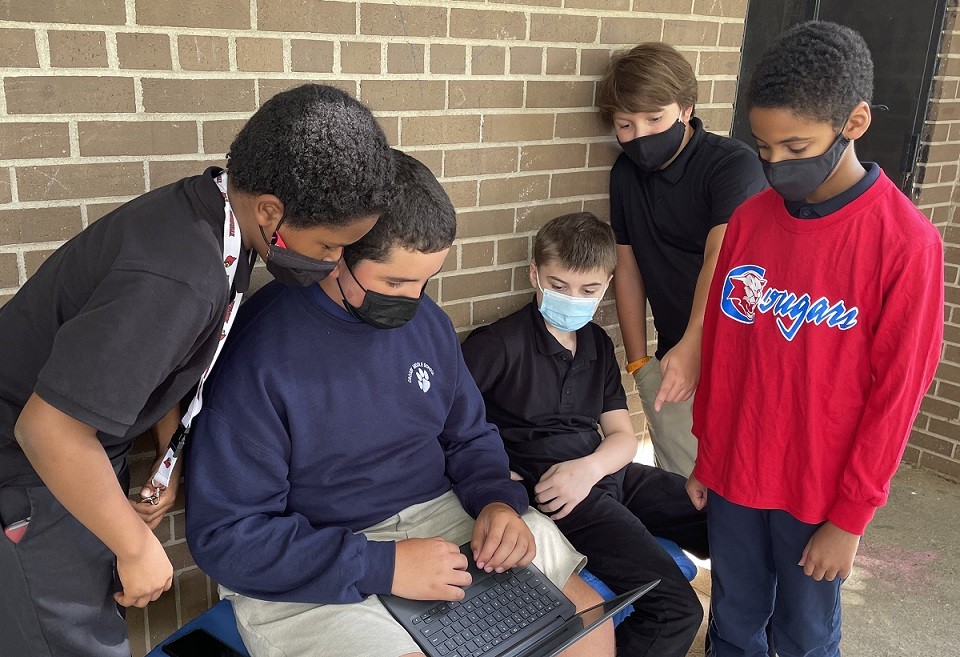 In Cox’s digital music courses, students come from all parts of the school. Some have performing arts classes while others don’t. “It’s nice that they can get a different approach to the arts,” she says.
In Cox’s digital music courses, students come from all parts of the school. Some have performing arts classes while others don’t. “It’s nice that they can get a different approach to the arts,” she says.
Cox’s 6th grade STEAM students explore the elements of music through digital means. For example, they might use an online tool to create a song in an ABA pattern.
For 7th and 8th graders in digital music, Cox teaches two courses: podcasting and composition. Students spend time on larger projects, selecting their own topics within the framework. In a prior year, podcasts ranged from favorite athletes to an exposé uncovering the conspiracy theory behind a local monster. The standards for the class incorporate audio recording and manipulation as well as the use of sound effects and music files. For composition, students have envisioned their own video game concepts; they then wrote music for the games while collaborating with digital arts classmates who created scenes to match the ideas.
“In general, my philosophy in choir or digital music is to make everything as student-centered as possible,” Cox says. “I let the students drive the learning. I try to get a feel for what they enjoy doing and how they enjoy learning.”










